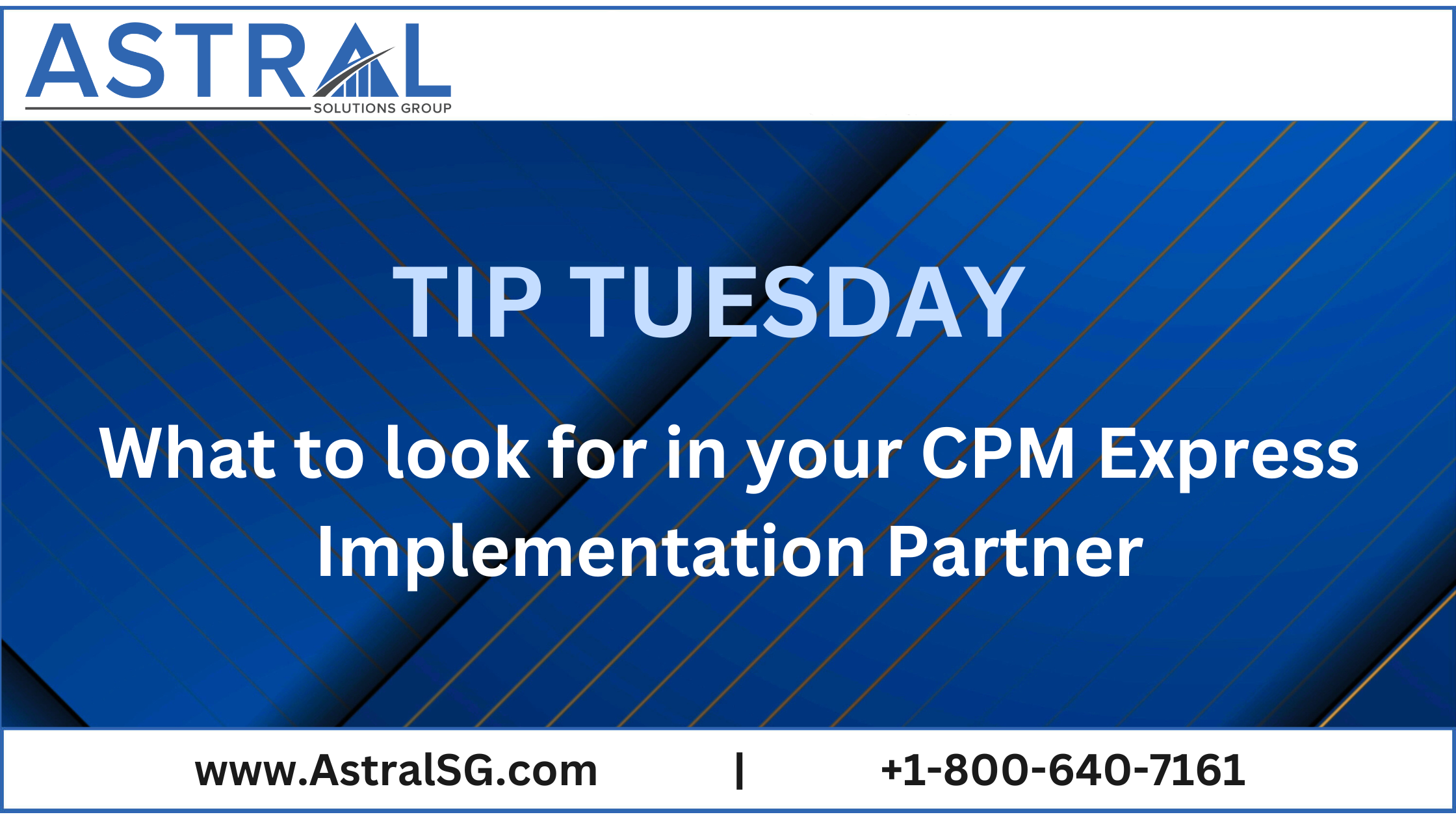
Enterprise Performance Management (EPM) is the next generation Business Intelligence (BI) that helps an organization to manage and evaluate its performance. It helps organizations make decisions that are aligned with the corporate strategy, maximizing efficiency and business processes.
Looking at the above description of an EPM solution, it’s a no-brainer for an organization to implement an EPM solution. It will always make sense for an organization. With that point of view, many organizations will move towards implementing an EPM solution. However, once the implementation of an EPM solution begins, organizations start to ask, “does it make sense for my organization?”
As organizations dig further, they realize for an EPM system to run effectively and efficiently, it also needs to consider people, processes, technology, corporate projects, traditional projects, operational improvements and organization transformation. Companies should also consider the strengths and reliability of their EPM vendor. With so many interdependencies and changes, many organizations find it difficult to implement an EPM solution and the project fails!
This article will help you gauge when an EPM solution makes sense for an organization. Organizations need to consider the following before starting to implement an EPM solution.
1. Support From Top Management
The deployment of the software should add value to the organization. The EPM solution should maximize the company’s profits by aligning to the strategic goals, and help an organization achieve its mission and objectives. With such an impact on an organization, top management must be vested in the implementation and need to approve the funding for the project. Thus, organizations must always look for top management support before implementing the EPM system
2. Organization Culture
The culture of an organization plays a very important role while implementing an EPM solution. The corporate culture usually acts as a deterrent to such implementations. Implementing an EPM solution is not an easy or quick fix; the project requires the support and commitment of the entire organization. Implementation of the projects involves a number of changes and management needs to build a culture among the employees of accepting and adopting the changes.
3. Number of Stakeholders
While deploying the system, the organization needs to consider the number of stakeholders. The project is not just limited to project managers, but also involves executives, senior managers, functional managers, portfolio managers, team members and possibly suppliers and vendors. Thus, it is necessary to have well-defined procedures and project management processes to ensure a smooth implementation and deployment of the system.
4. Number of Departments and Projects
The ease of implementation depends upon the number of departments and projects involved. Fewer projects and departments means that the configuration needs to satisfy a fewer number of requirements. However, if there are many departments involved, the complexity of the project rises because the configuration needs to satisfy the requirements of all the departments involved. Before implementation, organizations must also need to consider ongoing projects. Some projects may be at a critical junction in their execution. Changing the way that a project is managed at a critical point in its lifecycle might add an additional risk.
5. Number of Users
The number of users involved has a significant impact on the project. Before implementing the project, all the end users of the system should be taken into account. Success is not measured by the implementation of the system but by the number users who accept the system and work in developing a robust solution for the company.
EPM solutions are role-based solutions. Different people in the organizations have different roles and activities to perform. A large set of different users will lead to a large number of user-based roles, making the system complex. The organization may also need to train these users to get accustomed to the new system. Thus, organizations need to consider the training cost and transition time for the users before implementing the system.
6. Changes Going On In the Organization
A successful implementation of an EPM solution requires a concentrated and a dedicated effort, and impacts almost all the employees with the organization. If an organization is already undergoing many changes or has its bucket filled with priorities, then the risk of failure for the EPM implementation is high. Thus, it isn’t advisable for an organization to implement an EPM solution when the organization isn’t stable.
7. Project Management Style
Organizations tend to overlook their project management style while implementing an EPM solution. EPM solutions have large number of features and it becomes difficult to absorb all the capabilities in one roll-out. Phased roll-out, which adds features in increments, increases the possibility of success of the implementation. Organizations may need to move their management style from a single phase roll-out to multi-phase roll-outs before implementing an EPM system.
It is necessary to consider all the above points when planning your implementation efforts. If organizations fail to consider any of the above points, the probability of failure increases and an EPM solution may not make sense for an organization. When an organization uses the right approach, technique and methodology for implementing an EPM solution, the odds of success will increase.
To learn more about how to select and implement the right EPM solution for your company, contact us .




